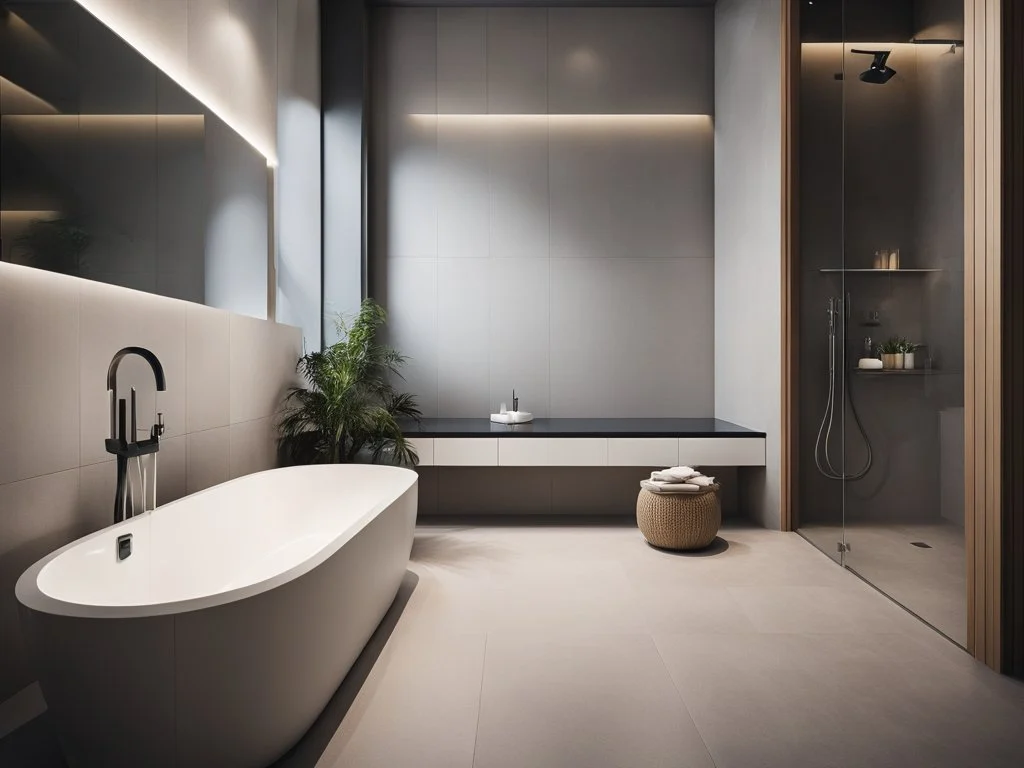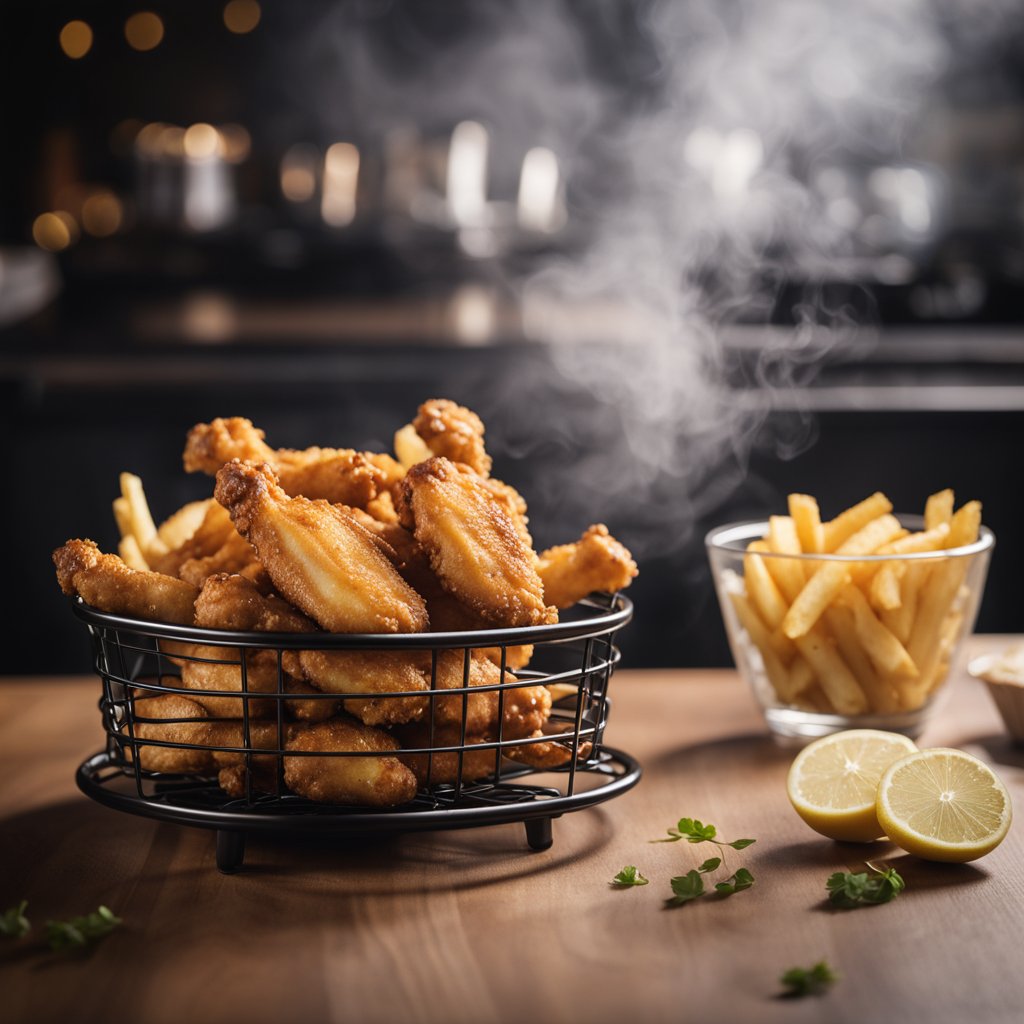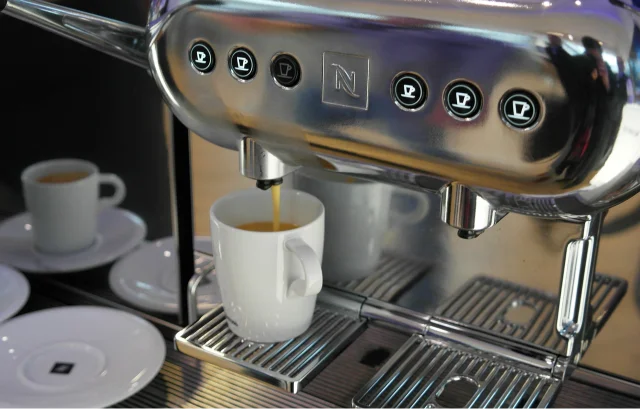How to clean wood kitchen cabinets? They add a touch of natural beauty and warmth to any home, but maintaining their appearance requires a bit of know-how. But worry no more: this is your comprehensive manual to caring for PU-polished wood cabinetry. From understanding the benefits of PU polish to establishing effective cleaning routines, this guide will help you preserve the charm and lustre of your wooden cabinets for years to come.
Contents
- 1 Key Takeaways
- 2 Understanding PU Polish and Its Benefits for Wood Cabinets
- 3 Regular Maintenance Routine for PU-Polished Cabinets
- 4 Effective Cleaning Tips for PU-Finished Wood Cabinets
- 5 Selecting the Right Finish: Solvent vs. Water-Based Options
- 6 Enhancing Your Kitchen’s Aesthetic with Wood Floor Paint
- 7 Conclusion
- 8 Frequently Asked Questions
- 8.1 What are the characteristics of PU polish for wood cabinets?
- 8.2 How often should I clean my PU-polished wood cabinets?
- 8.3 Can I use any type of cleaner on my PU-polished wood cabinets?
- 8.4 How do I deal with spills and stains on PU-finished cabinets?
- 8.5 What’s the difference between solvent-based and water-based finishes for wood cabinets?
- 8.6 How can I maintain the look of my painted wood floors to match my cabinets?
Key Takeaways
- PU polish enhances the beauty and longevity of wood cabinets, with specific maintenance routines needed to preserve its effects.
- Regular cleaning, involving daily dusting and weekly wiping with mild cleaners, is essential for maintaining PU-polished surfaces.
- Choosing the right cleaning materials and avoiding abrasive tools and harsh chemicals will prevent damage to the PU finish.
- Understanding the differences between solvent-based and water-based finishes can guide you in selecting the most suitable option for your kitchen cabinets.
- Complementing wood kitchen cabinets with the right wood floor paint can significantly enhance your kitchen’s overall aesthetic.
Understanding PU Polish and Its Benefits for Wood Cabinets

Characteristics of PU Polish
PU (polyurethane) polish is renowned for its durability and ability to protect wood surfaces effectively. It forms a hard, protective layer that shields the wood from moisture and wear, making it an ideal choice for kitchen cabinets that face frequent use and exposure to cooking vapors.
The finish provided by PU polish is not only tough but also offers a glossy sheen that enhances the natural grain of the wood. This aesthetic appeal is one of the key characteristics that draw homeowners to select PU polish for their cabinetry.
- Resistant to water and other liquids
- Provides a high-gloss finish
- Enhances the wood’s natural beauty
- Offers protection against scratches and everyday wear
When applied correctly, PU polish can last for years, maintaining the lustre and charm of your wood cabinets without the need for frequent touch-ups.
Advantages of Using PU Polish on Wood
Durability and Protection: PU polish is renowned for its ability to withstand wear and tear. It acts as a shield against moisture and UV rays, ensuring your kitchen cabinets remain in pristine condition for years to come.
Enhanced Appearance: The glossy finish provided by PU polish not only enhances the natural beauty of wood but also contributes to the overall aesthetic of your kitchen. It’s the shine that makes your cabinets stand out.
PU polish requires minimal maintenance, yet it significantly extends the life and appearance of wood cabinets.
Here are some tips to maintain the lustre of PU-polished surfaces:
- Use a soft, colourfast cloth for cleaning to avoid scratches.
- Choose a mild cleaner; harsh chemicals can damage the finish.
- Test any new cleaner on an inconspicuous area first.
Maintaining the Lustre of PU-Polished Surfaces
To keep your PU-polished wood cabinets gleaming, a gentle approach is key. Avoid harsh cleaners that can strip away the finish and dull the shine. Instead, opt for mild, pH-balanced solutions designed for delicate surfaces.
- Use a soft, lint-free cloth for wiping down surfaces.
- For regular upkeep, a simple solution of water and mild detergent will suffice.
- Test any new cleaner on a small, inconspicuous area before full application.
Remember, the goal is to maintain the cabinet’s lustre without compromising the integrity of the PU polish.
Occasional touch-ups with the right PU polish can also rejuvenate the appearance of your cabinets. Follow the manufacturer’s instructions carefully to ensure the best results.
Regular Maintenance Routine for PU-Polished Cabinets

Daily Dusting Practices
Keeping your PU-polished wood cabinets in pristine condition starts with daily dusting. Use a microfibre cloth to gently remove dust particles without scratching the surface. Employ even strokes and avoid vigorous rubbing to maintain the integrity of the polish.
Consistent dusting not only preserves the cabinet’s appearance but also prevents the buildup of grime that can be harder to clean later on.
Remember to avoid abrasive materials like scouring pads, which can damage the PU finish. Instead, opt for soft, colourfast cloths that won’t transfer dye onto your cabinets. Always test any cleaner on a small, inconspicuous area first to ensure it doesn’t harm the wood’s finish.
- Do: Use a microfibre cloth for dusting
- Don’t: Use harsh brushes or abrasive materials
- Tip: Test cleaners on a small area
Weekly Cleaning Techniques
To maintain the pristine condition of your PU-polished wood cabinets, a weekly cleaning routine is essential. Begin by gently wiping down the cabinets with a soft cloth dampened with mild dish soap and warm water. This will remove any accumulated dirt and grime that daily dusting may miss.
Ensure to thoroughly dry the surface with a clean, dry cloth to prevent any water spots or damage. It’s crucial to avoid harsh cleaners and abrasive materials, as they can harm the delicate PU finish. Instead, opt for mild, pH-balanced cleaners that are designed for PU-polished surfaces.
Remember, consistency in your cleaning routine will not only keep your cabinets looking their best but also extend their lifespan.
Here’s a quick checklist for your weekly cabinet care:
- Use a soft, colourfast cloth to avoid dye transfer.
- Choose a mild cleaner free from ammonia.
- Test the cleaner on a small, inconspicuous area first.
- Dry the cabinets immediately after cleaning to maintain the lustre.
Avoiding Damage During Cleaning
When cleaning PU-polished wood cabinets, it’s crucial to avoid actions that can cause damage. Use a microfiber cloth for daily dusting, ensuring you capture dust without scratching the surface. For deeper cleaning, opt for a soft cloth dampened with mild dish soap and warm water, followed by a thorough drying with a clean, dry cloth.
Avoid harsh cleaners that can strip the polish or degrade the wood. Instead, choose mild, pH-balanced solutions designed for PU-coated surfaces. Always test cleaners on an inconspicuous area first to prevent unwanted reactions.
Be gentle with your cabinets. Excessive force or the use of abrasive materials like scouring pads can leave permanent marks on the delicate PU finish.
Remember to promptly wipe up spills with a soft, dry cloth to prevent liquid damage. Avoid placing hot items directly on the wood, and never drag heavy objects across the cabinet surfaces.
Effective Cleaning Tips for PU-Finished Wood Cabinets

Choosing the Right Cleaning Materials
Selecting the appropriate cleaning materials is crucial for preserving the integrity of PU-finished wood cabinets. Avoid abrasive materials such as scouring pads or harsh brushes, which can scratch the delicate PU surface. Instead, opt for soft, colourfast cloths that won’t damage the finish.
When it comes to cleaners, always choose a mild cleaner and steer clear of any products that contain ammonia. Before applying it to the entire cabinet, test the cleaner in a small, inconspicuous area to ensure it doesn’t cause any damage or discolouration.
Remember, the goal is to maintain the cabinet’s lustre without compromising the PU polish.
Here’s a quick checklist for your cleaning toolkit:
- Microfibre cloths for dusting
- Soft cloths for wiping
- Mild, pH-balanced cleaners
- Warm water
By adhering to these guidelines, you can keep your wood cabinets looking as good as new for years to come.
Using Mild Cleaners for Longevity
To preserve the integrity and beauty of PU-polished wood cabinets, it’s crucial to choose the right cleaning agents. Mild, pH-balanced cleaners are your best bet for maintaining the finish without causing harm.
- Avoid harsh chemicals that can strip the polish and damage the wood.
- Opt for soft cloths and avoid abrasive materials like scouring pads.
- Always test cleaners on an inconspicuous area first.
When dealing with spills, act quickly with a soft, dry cloth to prevent any potential damage to the polish. Gentle handling is key; excessive force can do more harm than good.
Remember, the goal is to clean effectively while ensuring the longevity of your cabinets’ finish. By adhering to these practices, you can keep your wood cabinets looking pristine for years to come.
Dealing with Spills and Stains
When it comes to maintaining the beauty of PU-finished wood cabinets, dealing with spills and stains promptly is crucial. Spills should be wiped up immediately with a soft, dry cloth to prevent the liquid from damaging the wood’s polish. For stains, it’s important to clean them gently to avoid harming the surface.
- Do not apply excessive force while cleaning to prevent damage.
- Avoid exposing the wood to prolonged humidity.
- Be cautious with heavy items to prevent scratches and dents.
Use a soft, colourfast cloth for cleaning to ensure that no dyes transfer onto the wood surface.
Always test cleaners in an inconspicuous area first to check for any adverse effects. Stick to mild, pH-balanced cleaners that are suitable for PU-polished surfaces. Remember, the porosity of the surface affects staining; a less porous material will be more resistant to stains.
Selecting the Right Finish: Solvent vs. Water-Based Options

Comparing Finish Types for Wood Cabinets
When selecting a finish for wood cabinets, the choice between solvent-based and water-based options is pivotal. Solvent-based finishes, like Finezza PU and Lucido (Polyester), are renowned for their durability and rich luster. On the other hand, water-based finishes such as Acquabella offer a more environmentally friendly approach with easier cleanup and less odor.
- Solvent-based finishes are ideal for achieving a high-gloss mirror finish or a deep color effect.
- Water-based finishes, while not as durable, provide a healthier option for homes and contribute to a sustainable environment.
The right finish can transform the aesthetic of your kitchen, making it a warm and inviting space.
It’s essential to weigh the pros and cons of each finish type in relation to your lifestyle and the desired look for your kitchen. While solvent-based finishes may offer a more traditional appeal, water-based finishes align with modern eco-conscious trends.
Pros and Cons of Solvent-Based Finishes
Solvent-based finishes, like Finezza PU and Lucido (Polyester), are renowned for their durability and high-gloss sheen, making them a popular choice for wood cabinets. They tend to dry faster than water-based options, allowing for quicker project completion.
However, these finishes come with drawbacks. The high Volatile Organic Compound (VOC) content means they are less environmentally friendly and can pose health risks during application due to strong fumes.
- Pros:
- Superior durability
- High-gloss finish
- Quick drying time
- Cons:
- High VOC content
- Strong fumes
- Requires careful handling
Careful consideration of the pros and cons is essential when selecting a finish for wood kitchen cabinets.
Benefits of Water-Based Finishes for Kitchen Cabinets
Eco-friendly and Low Odor: Water-based finishes are a boon for those sensitive to strong smells and chemicals. They emit fewer volatile organic compounds (VOCs), making them a healthier choice for your home environment.
Durability: Despite being gentler on the nose, water-based finishes don’t compromise on resilience. They form a tough, clear coat that resists scratches and wear, ensuring your cabinets stay pristine for longer.
- Quick Drying Time
- Easy Cleanup with Soap and Water
- Non-yellowing Over Time
Water-based finishes offer the practical advantage of a quick turnaround. You can apply multiple coats in a single day without the lengthy wait times associated with solvent-based options.
Enhancing Your Kitchen’s Aesthetic with Wood Floor Paint

Matching Wood Floor Paint to Your Cabinets
When selecting wood floor paint, the goal is to complement your cabinets, creating a harmonious kitchen environment. Choose a shade that either matches or contrasts beautifully with your cabinetry. Consider the undertones of the wood and the lighting in your kitchen to ensure a cohesive look.
Harmony is key in design. Here’s a simple guide to follow:
- Match: Select a paint that is the same color as your cabinets for a uniform appearance.
- Contrast: Opt for a darker or lighter shade to add depth and interest.
- Undertones: Pay attention to the warm or cool undertones of your cabinets to match accordingly.
Remember, the right wood floor paint not only enhances the aesthetic but also sets the tone for your entire kitchen. It’s an investment in your home’s overall appeal.
Finally, test your paint choices with samples before making a final decision. This step ensures that the color you see in the store translates well into your home’s unique lighting and ambiance.
Application Tips for Wood Floor Paint
Proper application of wood floor paint is crucial for achieving a flawless finish. Ensure the surface is clean, dry, and free of debris before beginning. Use painter’s tape to protect baseboards and edges for a neat application.
- Begin with a primer to enhance paint adhesion and to ensure an even application of the topcoat.
- Apply the first coat of paint using a roller for large areas and a brush for smaller, detailed sections.
- Allow the paint to dry completely before applying a second coat, if necessary, for full coverage.
Consistency is key when applying paint to wood floors. Maintain a wet edge to avoid lap marks and apply each coat as evenly as possible. After painting, it’s important to give the floor ample time to cure before walking on it or placing furniture.
Remember, patience during the drying and curing process will result in a more durable and attractive finish.
Maintaining Painted Wood Floors
To keep your painted wood floors looking their best, a consistent care routine is key. Regular cleaning is essential to prevent dirt and grime from building up. Use a soft broom or a vacuum with a hardwood floor attachment to remove loose dirt.
For deeper cleaning, a damp mop with a mild cleaner is recommended. Ensure the mop is only slightly damp to avoid water damage. Always dry the floor immediately after mopping to protect the paint finish.
- Avoid using abrasive cleaners or scrubbers that can strip the paint.
- Place protective pads under furniture legs to prevent scratches.
- Immediately clean up any spills to prevent staining.
Remember, the longevity of your painted wood floors largely depends on the care they receive. Regular maintenance not only preserves their appearance but also extends their life.
Conclusion
In conclusion, maintaining the beauty and longevity of PU-polished wood kitchen cabinets requires a combination of regular care, proper cleaning techniques, and the use of appropriate products. By following the maintenance routines and tips provided in this guide, you can ensure that your wood cabinets retain their lustre and charm for years to come. Remember to avoid abrasive materials, harsh chemicals, and excessive force during cleaning. Embrace gentle dusting, wiping with mild cleaners, and prompt attention to spills to preserve the integrity of the PU finish. With these practices in place, your wood kitchen cabinets will continue to be a source of pride and beauty in your home.
Frequently Asked Questions
What are the characteristics of PU polish for wood cabinets?
PU polish, or polyurethane polish, is known for its durable finish, providing a protective layer that is resistant to water, chemicals, and everyday wear and tear. It enhances the natural beauty of wood while giving it a glossy or satin sheen.
How often should I clean my PU-polished wood cabinets?
For regular maintenance, dust your cabinets daily with a microfiber cloth and perform a gentle wipe-down with a mild cleaner and warm water once a week. Always dry the cabinets thoroughly after cleaning.
Can I use any type of cleaner on my PU-polished wood cabinets?
No, avoid harsh cleaners that contain ammonia or are abrasive. Stick to mild, pH-balanced cleaners that are suitable for surfaces coated with PU polish, and always test the cleaner on a small inconspicuous area first.
How do I deal with spills and stains on PU-finished cabinets?
Wipe up spills promptly with a soft, dry cloth to prevent the liquid from damaging the polish. For stains, clean gently without excessive force to avoid scratching the surface. Use a mild cleaner suitable for PU finishes.
What’s the difference between solvent-based and water-based finishes for wood cabinets?
Solvent-based finishes are known for their durability and high gloss, but they can be more toxic and have a stronger odor. Water-based finishes are environmentally friendly, have low odor, and dry quickly, but may not be as durable as solvent-based options.
How can I maintain the look of my painted wood floors to match my cabinets?
Choose wood floor paint that complements your cabinets and apply it following the manufacturer’s instructions. Maintain the painted floors by regular cleaning with a mild cleaner and avoiding dragging heavy objects across them to prevent scratches.



